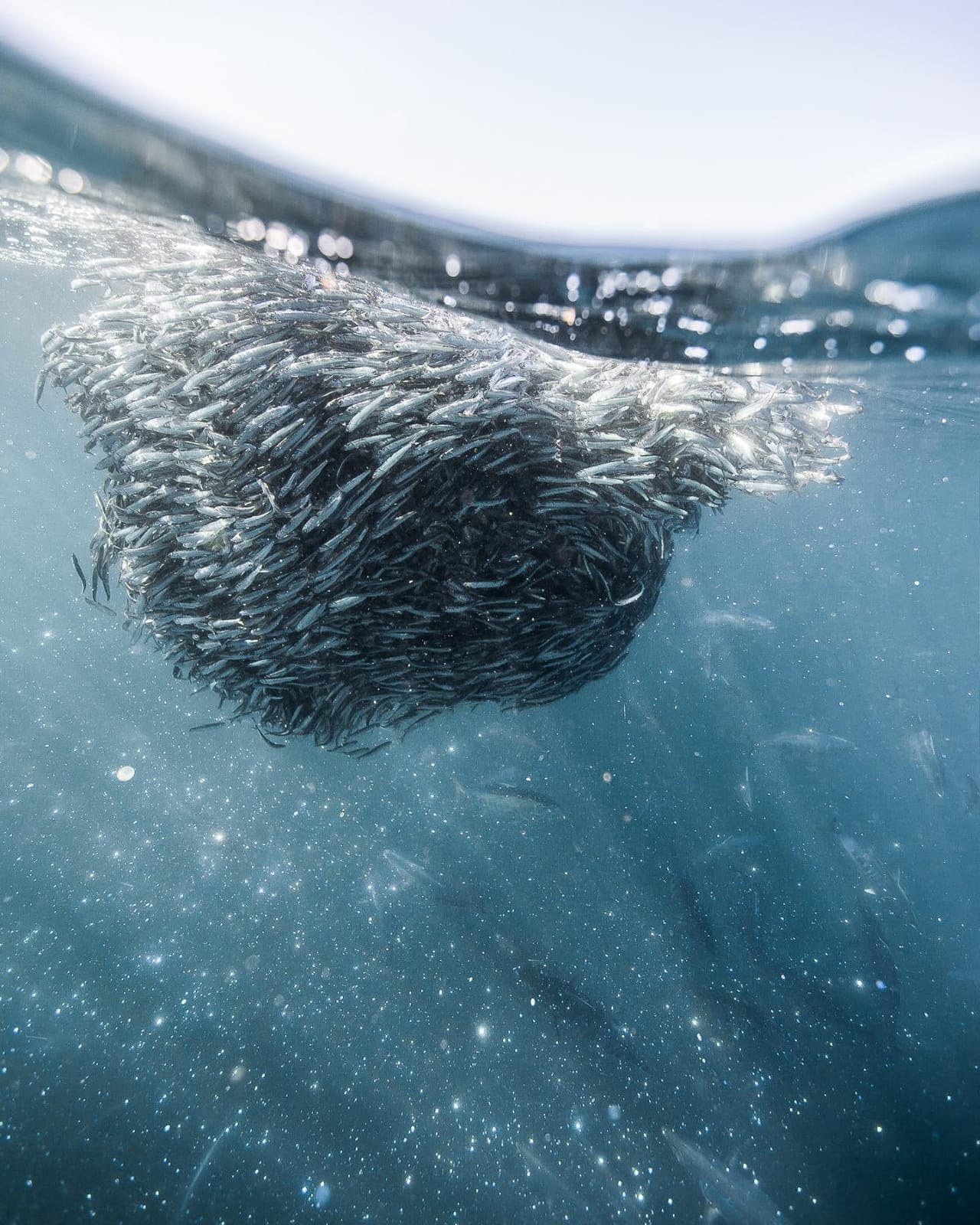The annual sardine run along the south and east coast of South Africa is one of the most impressive marine spectacles in the world. Occurring between May and July, this event sees billions of sardines, specifically the Southern African pilchard (Sardinops sagax), migrate northward from the cold waters of the Agulhas Bank to the warmer subtropical waters of the Indian Ocean, along the east coast towards Mozambique, and occasionally stretching towards Madagascar. As they travel, they form enormous shoals that can stretch over 7 km in length, 1.5 km across, and 30 meters in depth-massive enough to be visible from airplanes above.
This migration is primarily driven by changes in sea temperatures and currents. The sardines form vast shoals that can stretch for kilometers, creating a silver river in the ocean. These dense, shimmering masses of fish attract a plethora of predators, leading to one of the largest feeding frenzies on earth. Common dolphins are often the first to arrive, corralling the sardines into tight bait balls. This makes it easier for them to feed and also attracts other predators such as bronze whaler sharks, Cape gannets, and Bryde’s whales, which all join the feast. The sight of these predators working together in such a dynamic and coordinated manner is a testament to the intricacies of marine ecosystems.
In addition to its economic and tourist significance, the sardine run plays a crucial ecological role. It supports the food web, providing nourishment for a wide range of marine species, and contributes to the overall health of the oceanic environment. Scientists also take this opportunity to study the behaviour of marine species and the impacts of environmental changes on marine life.
Overall, the sardine run is a natural phenomenon that showcases the richness and complexity of marine life along South Africa’s coast, offering a spectacular display of nature’s bounty and interdependence.

